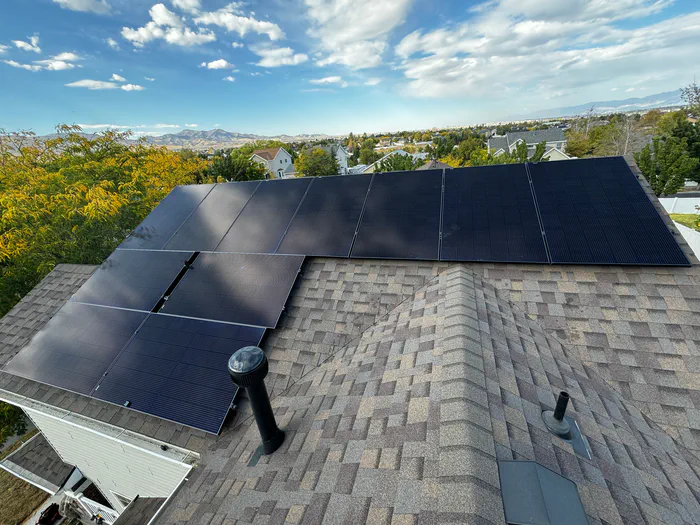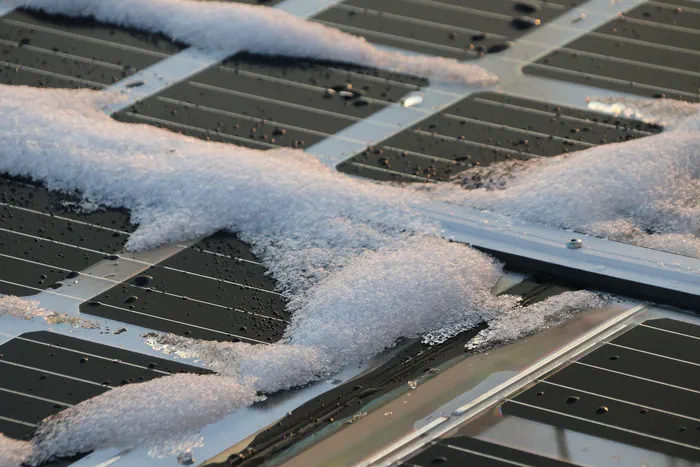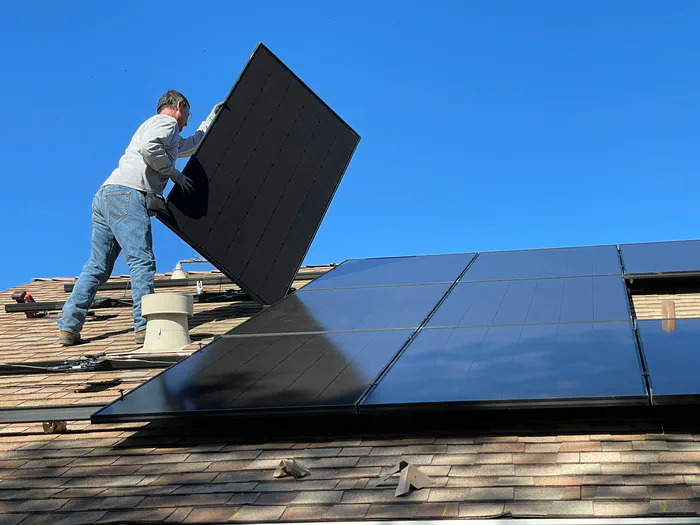More likely than not, you already know that solar panels can still generate power on cloudy days. And if you’ve looked further, you might have also heard that they can perform reasonably well even during the grayer winter months.
But knowing that solar panels can still work in these conditions might leave you wondering – how is it possible that a solar system can still manage to squeeze out power when sunlight is far from ideal?
The answer lies in a smart technology called Maximum Power Point Tracking (MPPT). In this article, we’ll explain what MPPT is, how it works, and how it helps your solar system perform better.
What is MPPT and Its Role in Solar Systems?
MPPT, or Maximum Power Point Tracking, is a smart feature built into many modern solar inverters and charge controllers. Its main function is to make sure your solar panels produce the highest amount of usable energy possible, even as sunlight conditions change throughout the day.
Let’s unpack this further.
Every solar panel has a maximum power point, which is the perfect balance between voltage and current where the panel can produce the most power.
However, real-life conditions like cloud cover, temperature changes, or shading make it hard for solar panels to stay at this ideal point on their own.
This is where MPPT comes in.
MPPT technology adjusts the electrical load on your panels to keep them operating as close as possible to this ideal spot.
How Does MPPT Relate to Rated Capacity?
Remember that your solar panel’s rated capacity is its maximum power output under ideal lab conditions. A 400-watt panel, for instance, can only hit that full 400 watts in perfect conditions, which are rare in real life.
MPPT helps your system get closer to this rated capacity by adjusting voltage and current to match the panel’s most efficient operating point. So, without MPPT, your system could fall well below its potential, especially during cloudy or partly shaded conditions.
How MPPT Technology Helps Solar Panels Perform Better
Earlier, we’ve made it clear that solar panels don’t perform at their best all the time – especially in low-light conditions – but MPPT makes the necessary adjustments to ensure that the drop in power production remains minimal.
But what’s happening behind the scenes that allows MPPT to do this?
MPPT works by constantly adjusting two key electrical elements: voltage and current.
These adjustments happen in real time, often multiple times per second, to ensure your system stays in the “power zone” – the point where your panels can deliver the most energy possible.
For example, on a bright and sunny afternoon when your panels are receiving ample sunlight, MPPT may adjust the voltage upward to match the panel’s peak operating point.
Meanwhile, on a cloudy day, MPPT may lower the voltage slightly to align with the reduced light conditions.
This continuous fine-tuning helps extract the highest possible power output, no matter what conditions arise.
In fact, one study found that solar systems equipped with MPPT achieved up to 99.93% efficiency in tracking the maximum power point, compared to just 21.21% efficiency without MPPT.
To be clear, this doesn’t mean your panels will hit 99% of their rated capacity.
Instead, it means that MPPT effectively keeps your system operating at its peak power point nearly all the time. Without MPPT, your system may only reach this optimal performance point around 21% of the time, which can drastically reduce overall energy production.
How MPPT Works in Different Solar Systems
MPPT behaves a little differently depending on the type of solar system you have. Each type of system has its own components and energy flow, which affects how MPPT operates to improve performance.
Grid-Tied Solar Systems
In grid-tied systems (without battery backup), MPPT is built into the inverter.
Because these systems don’t have batteries to store excess energy, MPPT ensures your panels send as much power as possible directly to your home or the grid via net metering. This way, you also maximize your solar savings.
Grid-Tied With Battery Backup
In a hybrid system that combines solar with battery storage, MPPT plays a dual role. MPPT still helps the inverter manage the panel’s voltage for maximum energy production, but at the same time, it also helps your batteries charge efficiently.
Since batteries operate on DC power, MPPT carefully balances the flow of energy to avoid overcharging or undercharging. MPPT speeds up the flow when the battery is empty and slows it down as the battery nears full capacity to avoid spills.
As a result, your battery bank stores as much energy as possible without risking damage.
Off-Grid Systems
MPPT is especially crucial in off-grid systems because there’s no grid to fall back on when solar production drops. Without MPPT, power shortages are more likely during cloudy days or periods of high energy demand.
In this setup, MPPT is built into the charge controller, which plays a role similar to what an inverter does in grid-tied systems.
While an inverter optimizes power flow directly to your home or the grid, a charge controller is responsible for regulating the energy going into your battery bank, so it receives the right amount of power to charge efficiently without overcharging or undercharging.
Does My Solar System Already Have MPPT?
If you currently have a home solar system that was installed more than 10 to 15 years ago, chances are your inverter doesn’t use MPPT technology yet.
However, to be sure, you can check your inverter’s specs or manual and see if it specifically mentions “MPPT technology”.
Otherwise, your home probably uses the older inverter setup that relied on PWM (Pulse Width Modulation) technology.
Back in the day, PWM was considered practical, given the fact that solar systems were much smaller and designed to offset only part of a home’s energy use.
However, with modern systems designed to generate more power, MPPT has become the new standard. In fact, popular brands like SolarEdge, Enphase, and Fronius already incorporate this technology in their models.
That means, once you have your home solar up and running, MPPT automatically works behind the scenes to maximize your energy production all year round.
Final Thoughts
MPPT plays a big role in helping your solar system produce as much power as possible, even when sunlight isn’t ideal. Better yet, most modern inverters already have MPPT built in, so you won’t have to worry about complicated add-ons or adjustments.
But while MPPT boosts performance, true savings come from a solar system designed for your home’s unique energy needs – something only the right installer can deliver. We at Quote for Solar can help you connect with trusted solar installers who are fit for the job.
Simply request a quote, and we’ll provide you with three solar estimates in no time, so you can compare options quickly and start saving with solar right away!
If you found this article helpful, please share it with your friends and family, and don’t forget to subscribe to our blog for more informative content on solar energy and sustainability!




